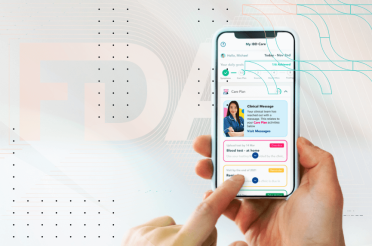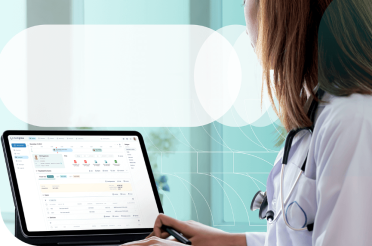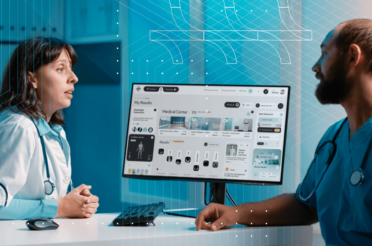Healthcare is an ever-evolving industry. Health care providers are always searching for new technologies that improve patient care, reduce medical errors or ease day-to-day operations. In that field, the software can help clinics to achieve their goals.
One of the latest advancements in medical services is the introduction of health information technology (HIT).
This article explores Health Information Technology solutions, explains their impact on healthcare, and examines their different types.
Definition of Health Information Technology
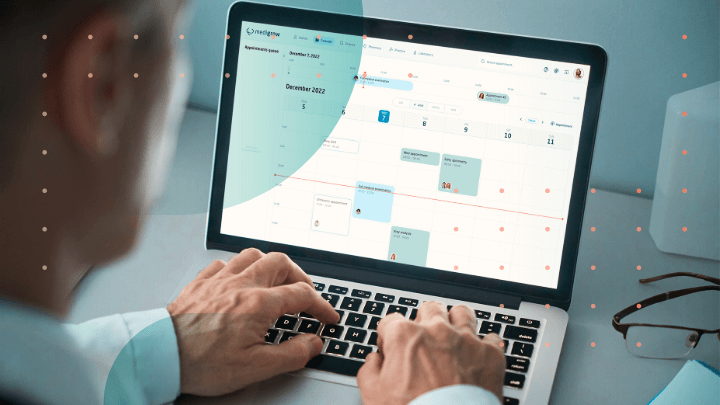
HIT is an umbrella term for computer systems that digitally collect, store and analyze medical care data from multiple healthcare facilities. Their ultimate goal is to improve patient treatment.
HIT aims at improving patient outcomes through increased operational efficiency in the medical industry. Seamless information exchange is the catalyst for modernizing the field and benefits all working in it – from researchers to providers.
The Role of Health IT Today: Stats and Numbers
Health care information technology and healthcare software systems increase median revenue by $49,916 per full-time physician. [1]
Medical research shows that over 50% of all US hospitals have adopted electronic health records that integrate health insurers’ real-time prescription benefits for all their patients. 15,9% have done that for a limited set. [2]
As of December 2022, 58,5% of all adults used the Internet to acquire medical information, while over 40% per cent used the Internet to conduct communication with a medical professional.
Labor statistics indicate that the number of people choosing the career path of health information technicians continues to grow. With it also grows health information management technology. [3]
Types of Health Information Systems
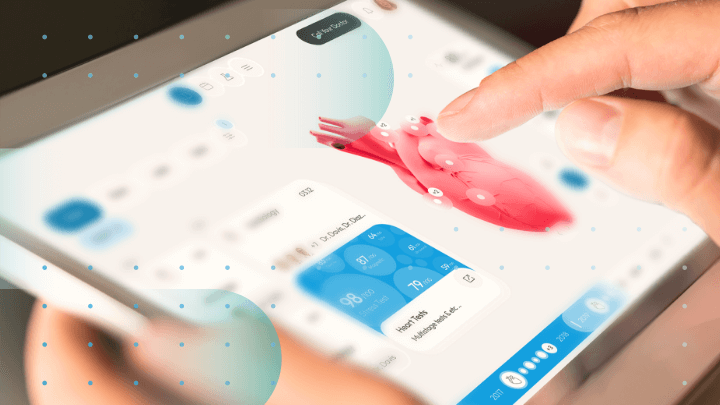
There is a wide array of different types of health technology. This article will explore prominent examples of health information technology in order to obtain a full grasp of their impact.
Medical practice management system
Traditionally, healthcare professionals must spend considerable time on mundane tasks, such as scheduling or patient billing. Also, the medical staff within a healthcare organization needs to maintain more than one database for basic tasks.
Instead of putting the focus on patient care, professionals must handle administration. These tedious tasks lead to burnout, human error, and reduced efficiency.
Medical practice management systems or hospital management software is a centralized system intended to handle administrative, clinical, regulatory, or financial tasks a healthcare facility might require.
Those systems have many functionalities:
- Handling patient engagement;
- Medical billing and scheduling;
- Other day-to-day activities.
The main downside of implementing a central system for handling these issues is how cost effective the implementation and logistics is. However, the benefits far outweigh the initial downsides as the maintenance of the system is far lower and leads to increased productivity, which provides lower costs long term.
Electronic health records

Electronic health record (EHR), also called electronic medical record, is simply storage for patient data. It is a digital summary of the patient’s data created by different healthcare organizations stored in one digital space. It could include personal data, medical history, appointments, or any sort of patient information.
Of course, healthcare providers keep physical medical records. Yet, they require a lot of paper and take a lot of time to create or read. Medical professionals could sometimes even waste time finding a specific record among the thousands of physical ones.
Most importantly, necessary patient data usually is stored in several different physical records that need to be cross-examined.
However, the potential downsides are clear – if the EHR systems are hacked, that could expose personal patient data. Another issue is that the records may disseminate inaccurate information if the medical professional has input the wrong patient data.
Both issues can be solved by employing software capable of withstanding hacking attempts. Technology is in constant development of new ways to fight hackers and find ways to solve problems such as wrong input into the system.
E-prescribing software
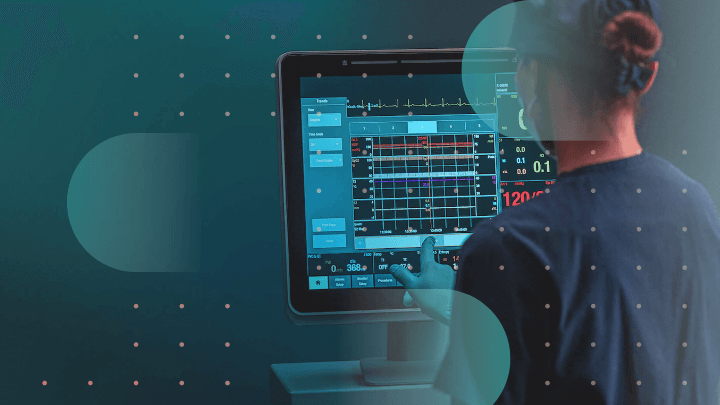
E-prescribing software electronically generates prescriptions for patients. Thanks to it, patients can remotely request care or send prescription refill requests through an electronic patient portal. Doctors, on the other hand, can then create an electronic prescription and send it to pharmacists or other public health officials.
E-prescriptions eliminate the need to send patient data to a pharmacist and enable the creation of medical histories. A prescription can be directly input into a patient’s EHR and accessed by the pharmacy. AI can also detect misplaced commas in medication dosage, preventing the over or under-medication of a patient.
E-prescribing is also beneficial to the patient. People do not need to visit a healthcare facility to renew their prescriptions. Healthcare providers can work with health information technology companies to ensure their e-prescription service can adapt to the relevant medical practices.
Increase productivity and reduce data security and compliance errors Get expert advice on how to implement the different types of HIT and Healthcare Software Systems solutions to transform your healthcare practice.

Remote patient monitoring
Remote patient monitoring refers to systems that track patients’ medical information outside a healthcare facility. Healthcare professionals usually track patient health information with wearable medical sensors.
These sensors track patients’ vitals or moods and thus provide doctors any information they need. An example would be following the glucose levels or the heart level of a patient.
Both patients and healthcare facilities can benefit from remote patient monitoring:
- Benefits for the patient: In many instances, remote monitoring removes the need for a prolonged hospital visit, enabling the patient to live a normal life. This type of monitoring is also cheaper than visiting a healthcare facility. Some diseases could even be detected by the software, prompting a hospital visit in the first place.
- Benefits for the medical industry: Based on the information received by remote monitoring devices, clinics establish patient demographics. If the health conditions of several patients worsen, hospitals can preemptively prepare more beds or take additional measures. All of which decreases the likelihood of a healthcare crisis.
Yet, the biggest concern with this technology is data security. Information systems must remain compliant with regulations such as HIPAA or GDPR and protect the personal health data of patients. Cybercriminals are always trying to exploit vulnerabilities in the software.
Master patient index (MPI)
A master patient index is a system that holds a unique identifier for each patient and tracks every service provided to that patient by the healthcare facility. Each patient receives a unique identifying number (UID) and hospitals record information such as admission date and time, treatments, discharge, and everything relevant in one database.
There is no standard for identifying patients in the healthcare context in many countries. Some hospitals do not acquire the necessary demographic information about a patient or do not keep track of all the healthcare services provided to the patient. Confusion can arise if the patient has visited several healthcare facilities as each one holds a different record.
A master patient index doesn’t only create a database for identifying a patient. Its main design is that the patient index can be shared with other medical professionals or healthcare providers. In this way, other clinics can easily track a patient’s medical history.
That’s how this type of software can improve patient outcomes:
- Reducing the duplication of information: the software can scan for identical information between the different databases;
- Finding inconsistencies between different databases: MPI can help summarize all of the different treatments in one place. Clinicians can easily compare these databases and the AI can even help identify which areas should be checked;
- Helping reduce input errors: The software guides medical staff into filling in the different databases.
Yet, the software is still reliant on human input. Some formatting or typing errors are persistent and lead to the misidentification of patients. This raises concerns for patient safety. If the wrong medical record is selected, the patient may receive a different treatment than what he needs.
Yet, human error occurs even more frequently when creating a patient record on paper. While a medical patient index cannot fully prevent mistakes, it can minimize them. Hopefully, as technology and AI progress, human error will be removed from the equation.
Patient portal
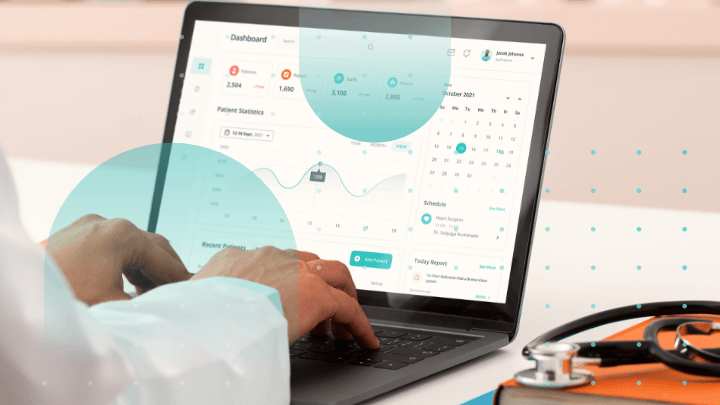
A patient portal is a website or application that allows patients to access their health information remotely and the doctor can also work remotely. Through patient portals, people can contact their physicians or seek medical or a healthcare team to ask specific questions, schedule appointments, etc.
A visit to the doctor is not always needed. Sometimes patients only have a small question or need something simple, like refilling a prescription. If these simple tasks cannot be done electronically, patients are forced to visit the clinic and the medical staff must divert their attention from other patients.
The main benefit of a patient portal is purely a logistical one. Patients save time by looking for solutions online, while medical staff can turn their attention to people who need treatment more quickly.
Patient portals have varied functionality. A patient can access health-related data from anywhere in the world on any electric device. They can contact their physician online for questions or schedule an appointment.
Medical billing software
Medical billing is one of the essential practice management systems. It is simply software that automates billing and handles insurance. Medical billing can either be implemented as a stand-alone system or integrated into other systems, such as the EHR of a patient.
Medical billing usually involves a lot of paperwork and administrative tasks. Individual patients may have problems paying, dispute payments, require reimbursement, etc. Insurance companies also create problems for medical centers.
Medical billing software can reduce healthcare costs, by saving paper and automating tasks. The software also handles a lot of the patients can have with payment, providing a better healthcare experience. More importantly, the software can serve as proof of insurance.
Yet, some issues occur when using the software. A Medical billing system needs accurate information on all of the provided services in the first place. Sometimes patients can be billed twice for the same service. Improper medical coding can also lead to underbilling or overbilling.
However, these healthcare facilities solve these issues by combining several healthcare information systems. When using a master patient index and an electronic health record, clinics can minimize these issues.
Health information exchanges (HIE)
As their name suggests, HIE are programs that allow for the secure sharing of information and other digital resources between different medical organizations. HIEs are like bridges between various EHRs.
The main purpose of HIEs is to ensure that the needed information is available to the providers at the needed time, no matter if the patient visited other facilities beforehand.
HIEs are especially useful because they improve the coordination between different specialists and reduce the need for duplicate testing between visits. This naturally leads to reduced costs and more quality decision-making.
HIE, like other HITs, faces the issue of high implementation costs and the need for ongoing maintenance. Hospitals have to reinvest the money saved into funding teams of IT professionals with good technical skills or chief information officers to maintain the network.
Navigate the diversity of HIT and Healthcare Software Systemstalent Simplify the remote patient monitoring and personalized care processes to enhance the efficiency of your practice with the help of our strategists.
Clinical decision support systems (CDSS)
CDSSs are tools designed to assist experts when they have to make clinical decisions.
The systems aim to analyze information that is unique for the patient. They cross-reference that information with clinical guidelines and the available research to provide patient-tailored recommendations to the physicians.
CDSSs tend to be extremely useful as they can guide anyone toward good clinical decisions. Even the most acclaimed medical professionals have gaps in their knowledge. Moreover, they can be stressed by outside factors. CDSS can serve as effective assistants that fill their gaps or guide their decision-making by presenting overwhelming data in easily digestible forms.
The development of decision-support systems may be one of the greatest advancements in modern medicine. When they have been fully advanced, they may fix the problem with the lack of qualified medical professionals in the market.
With CDSSs, even experts with just an associate degree (or even postsecondary education) in medical sciences would be able to perform the technical side of operations. Decision-making would be left to the CDSSs, thus lowering the needed knowledge operators ought to have.
Mobile health (mHealth) applications
Mobile devices have become fully integrated into our daily lives. Their use in medicine can be various and mHealth apps prove that. They are software programs designed to provide easily accessible services to users through their phone, wearable or tablet.
Such services include:
- Health monitoring: Tracking vital signs, physical activity, sleep patterns, and other health metrics;
- Medication management: Tools for medication reminders and adherence tracking. They can also be tailored for specific conditions like diabetes or mental health disorders;
- Telemedicine: Platforms enabling remote consultations with healthcare providers;
- Fitness and wellness: Tools for exercise tracking, nutrition planning, and stress management.
These apps make healthcare easily accessible at any time and make patients engaged in their own health management. An engaged patient is much more likely to seek preventative care and early intervention and seek medical help.
Future trends in information technology within the healthcare industry
Any innovation of this scale is bound to attract investors and researchers. HIT is rapidly evolving and growing and healthcare is better for it. The development of AI and machine learning changes the game when HIT is concerned. Even more complex tasks become available for machines to do and administrative tasks are likely to be fully automated in the future.
Moreover, the Internet of Things starts to integrate technology into people’s everyday lives even more. Medicine is bound to profit a lot by collecting constant accurate medical information. Combining that with cloud technology, future hospitals will have access to large amounts of secure information.
Blockchain technology ought to make that data easier to share and records more transparent. This can occur without the need for political bodies such as a national coordinator, as blockchain can serve as a community-run regulator.
The need for a trusted partner
A common issue between healthcare information systems is security concerns. Hackers can exploit vulnerabilities in the system to gain access to personal patient information. If the software is not up to date, it can violate regulations.
Another issue is coding errors. Particularly in urgent care applications and billing software, bugs can be detrimental.
For this reason, healthcare facilities need a good IT partner to update and maintain the software. BGO Software is among the leading companies specializing in developing and maintaining healthcare software..










